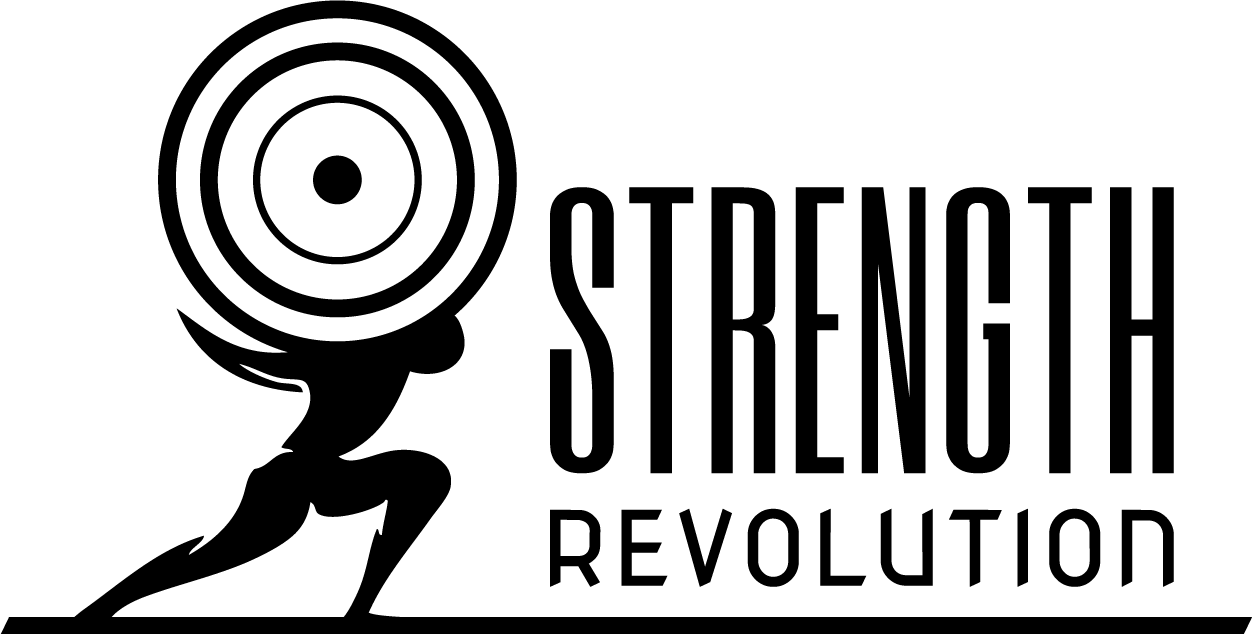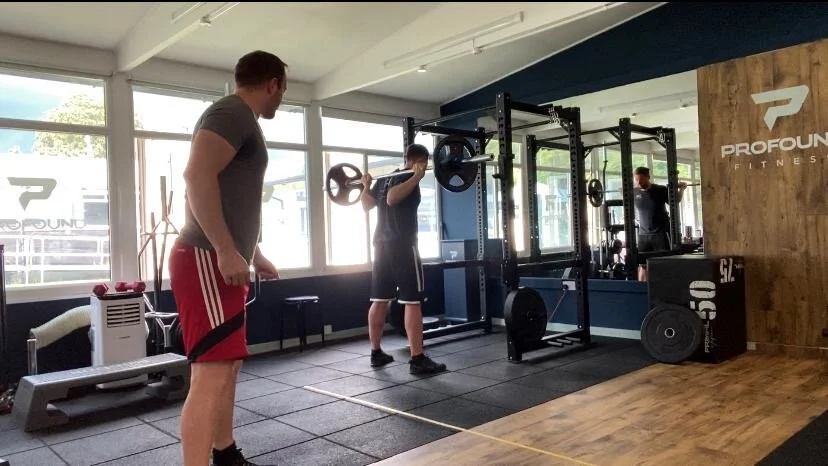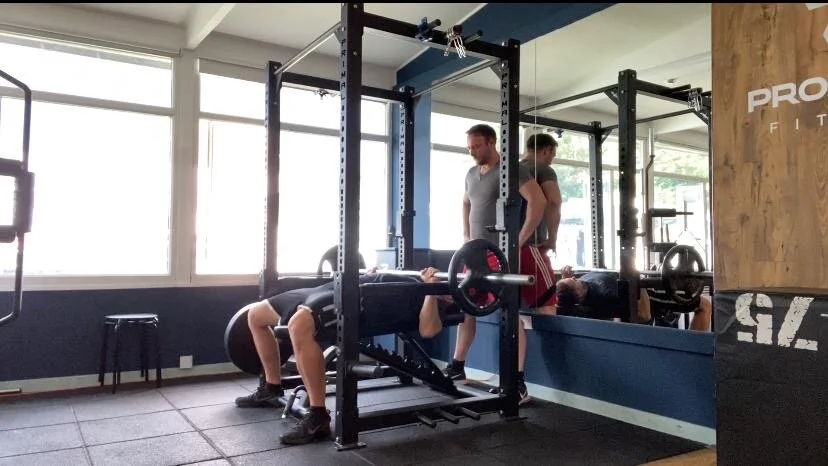5 Important Tips For Hiring A Strength Coach
Strength training with barbells is in vogue for men and women as never before and, in response, the global fitness market is inundated with professionals labelling themselves as coaches offering strength training.
Here’s what you may not know… many of the available courses to becoming a coach don’t actually teach that much about coaching! Most are predominantly on-line only courses with modules to read up on and very little to no actual mentorship enabling a personal trainer to really learn the craft of becoming a competent strength coach.
There is no legislation that protects the term “coach” like there is for medical doctors, police officers, registered dieticians and many other professions making it harder for great coaches to stand out amongst the dozens of fitness services in your local area.
So, in this article I am going to put you in the picture with my insider’s guide on how to spot a great strength coach to guide you to start strength training.
This is the checklist that I would use myself if I were hiring a strength coach to keep an eye on my lifts.
Tip 1. Cueing Form Not Counting Reps
Barbell training is much harder to coach than the use of resistance machines. Resistance machines are bolted to the structure of the gym, and as such they force the lifter into the machine’s range of movement. This means that the lifter cannot lose their balance or move more as freely as they can with barbell training.
Barbell strength training therefore requires a much more honed coaching ability to do properly.
Using either observation at the gym or by going to their social media videos take a look at the professional doing their job during an in-person session with a client.
Good coaching means observing the lifter and analysing the way they move in real time during an exercise.
A good coach should have a mental map of how movements should be performed against a model of movement for that exercise.
When the lifter deviates from this movement pattern the coach should issue a cue. Typically this is a brief 1 to 3 words that corrects the way the person is doing the exercise. If all you hear is the counting of numbers as the lifter performs reps across sets and across exercises then this is a tell-tale sign that essential coaching skills are absent.
Next observe, where is the coach standing?
In order to analyse a movement pattern the coach must have the best viewpoint of their lifter.
Example: the squat is one of the most recognised and widely performed strength exercises and is best viewed/coached from behind the lifter at an approximate 45º angle, and at times from side on.
The 45º coaches’ viewpoint for the barbell back squat
Now that you know this, observe the coach during the squat. Are they standing in a position that enables an adequate view? Or are they snuggled up directly behind the lifter with their arms wrapped around the front of their body?
It is quite common to see the trainer in a position that is too close to the lifter - in most cases it is unwarranted. They may be attempting to rescue the client if they struggle on a rep, but that is what the safety arms on the squat rack are for.
At best the close stance spotting position offers a viewpoint of the back of the lifter’s head and therefore cannot be used to adequately diagnose movement breakdown on a lift nor to subsequently issue a useful coaching cue to get the lifter through a challenging set of reps.
Tip 2. Knowing How To Spot the bench press
The global popularity of the bench press guarantees that it will appear in most peoples’ workouts and within this widely performed exercise is the role of the spotter and our next tell tale sign of coaching proficiency.
While a client lifts the spotter (usually the coach) will stand at the head end of the bench. The role of the spotter should be to assist with unracking and re-racking the barbell, they should otherwise only step in to assist if the lifter begins to fail a rep, then the job becomes to aid in locking out (raising it so that the arms are fully extended with no bend at the elbows) the bar with the lifter and safely re-racking it.
At all other times the spotter should be a step away so as to be out of the view point of the lifter.
However, what is an extremely common misdemeanour is to witness a two person attempt at this exercise.
In this instance the spotter will eagerly take hold of the bar when it starts to slow down during reps. They will then “help” several more reps to happen in a tandem fashion with the lifter who is now doing proportionally less work.
Stepping back to let the lifter perform the bench press without interference
Tip 3. do they do the exercises they want you to do?
The skills of a good coach are hard earned through watching thousands of reps. Underpinning this is the fact that in order to be a great strength coach you must have first trained yourself.
This level of craftsmanship cannot be gained by only reading a manual and sitting a multiple choice exam paper.
I want my clients to know that before I ask them to do a seriously challenging set of 5, I have first taken my own body to these kinds of tolerances.
Great strength coaches lead from the front, they need to have done the exercises they are asking you to do. The foundation of strength training lies with free weights, particularly barbells. The exercises that should be regularly performed are squats, deadlifts, standing shoulder presses and bench presses.
These exercises are the best at producing full body strength and although the olympic lifts like the clean and jerk and snatch are visually striking to behold, they are really displays of strength a lifter has, rather than the best way to develop it.
I suggest that you ask the professional about their strength training past and what they currently do and compare that with what they are offering to you.
Tip 4. understanding how to programme you to make progress
Strength training is now becoming embraced by not only the health community at large but also medical doctors as a fantastic form of physical activity to be doing. Strength and health are positively correlated.
But, there are strength exercises and then there is strength training. Just performing the exercises is great practice, but progress and accumulating strength comes from proper programming that is bespoke to you.
You’re looking to hire a professional in strength training because you want the result of becoming stronger and have that outcome in mind. In addition to this you may have an equally important side-by-side reason such as weight loss, weight gain, learning how to do the barbell lifts, improving your physical appearance, or enhancing athletic capability to name a few.
These objectives are best achieved through planned bouts of training, leading towards the outcome in the same way that a healthy bank balance is achieved through planned bouts of saving.
A good coach knows how to deliver on an outcome. That means having a plan, we call that plan a programme and it is well thought out and calibrated to advance you session-by-session.
If I was hiring a coach I’d want to be reassured that they made a plan in advance and didn’t just free wheel it on the day of the session. There is a big difference between just exercising for the sake of doing an activity and actual training to take you to your objectives.
Ask: When do you set the programming for your clients?
What is also common is letting a client steer the programme too much. Input from you is important from the outset to design and target the overall outcome, and of course for motivational reasons to train, but if you are being allowed to come to sessions and make requests that deviate away from the overarching goal of the plan routinely, you are being done a disservice if the professional does not steer you back on course.
In a service oriented industry it is awfully tempting to say yes to client requests on the day and all the time, but if this keeps you off course from the programme design and is repeated for too long then it has the potential to subvert the outcome.
I’ve had to say no in situations like this, but then I always come back to my knowledge and back that answer up with the sound reasoning of why we are taking the steps we are in the programme.
Tip 5. What if you’re not an athlete?
Fitness professionals love talking about well known local or national athletes they have trained and guided to performance success, they may well have run strength and conditioning programmes with athletic clubs, but most people don’t have the good fortune of those kinds of genetics and may not have been picked for the sports teams (or even enjoy sports!) in some cases.
Fortunately strength training is massively accessible and starting this kind of training does not rely on you having a high level of athletic attributes or having been picked for many sports teams back in school.
What is important is the skills of your coach and if they have coached someone like you before.
Think of it this way, pro athletes are specifically picked for teams because they can quickly replicate movement patterns with precision and explosion and they have the kind of genetic endowment that means they get better and better no matter what training you throw at them.
For everyone else (and this includes me) there will be hurdles to overcome, some physical and some psychological.
The less physical prowess a person has, the more hurdles may arise. Challenges around technique, building confidence and maintaining consistency in regular training sessions.
That’s not a negative and it’s not a reason to cancel your plans but, you want to use this tip to ask the coach the people they’ve trained and hurdles they’ve had to overcome.
Have they had experience helping a wide variety of people, of differing ages and abilities to strength train?
“Great coaches know how to help people with average genetics achieve the results you’d expect of athletes. ”
Great coaches know how to help people with average genetics (which is most of us) achieve the results you’d expect of athletes and they help those that are already athletes use strength training to leverage a competitive advantage that comes with enhancing strength and power.
They also know how to work with spectrums of people who may have tried and given up with sports or activities with the self-belief that being fit and active was just not for them.
A good coach will know what to do if you have a pre-existing injury or even if you think you may be too old to get started with weights at the gym.
What kind of progress has been made with these groups of people?
Conclusion
There are a great many coaches out there, but there aren’t many great coaches.
What’s common is for professionals to take the smallest step to being able to work in gyms and then go no further with investing in their knowledge or ability and truly becoming a coach.
It’s taken me years of reading, practice, mentorship with my coaches and seeing thousands of reps performed and I still have the mindset that there is always more that I can learn.
Much of the fitness industry model is set around low overheads for staff costs (where staff are employees), meaning that gyms need personal trainers to make them money and complete the services they offer, but not cost them too much. They also need to fit into the gyms existing mould and pricing structure.
This situation creates a kind of vacuum where great coaching cannot flourish. For a personal trainer to be able to go on and become a great coach they have to invest time and money and find their own voice and many corporate gym business models aren’t set up to support doing that; instead favouring investment in hi-tech equipment or adding more leisure aspects to the facility to drive up revenue such as food and beverage.
Most people going into a gym to find a trainer or coach will first be wowed by the equipment in the facility and then form a conclusion that if the space has this top of the range equipment it must surely have top of the range trainers…
We now live in a time of modern strength training that is both time efficient and highly rewarding to anyone doing it.
Being able to effectively coach people in-person takes a lot of study and application to do well, fortunately being able to identify a coach worth working with can start with knowing just 5 things to look out for.


